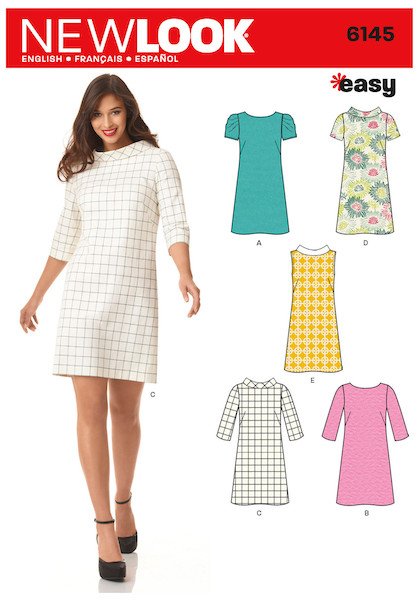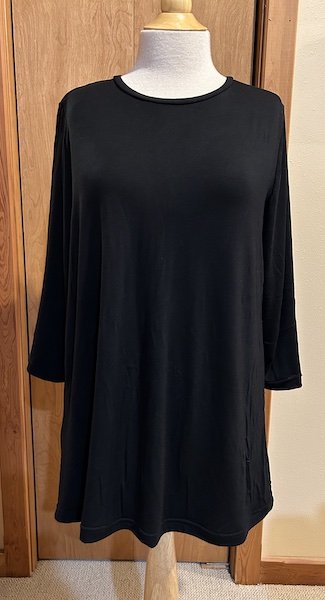How to Teach Knitting
According to the date stamp on my handouts, the last time I taught knitting classes—before Sew Expo—was way back around 2008. Much has happened since then. Although I would like to claim that I am not biased, I’d be lying if I said I wasn’t a tiny bit dogmatic about a few things. Let’s just get it out there.
I’ve been knitting since I was 8 or so, although college was when I started knitting seriously. My mother taught me to knit with the yarn in my right hand. I also know how to knit with the yarn in my left hand, and the way that I do it is known as the Continental method. There are several methods of making a stitch with the yarn held in the left hand, and therein lies the rub.
The difference is in how the stitches sit on the knitting needle.
(Pardon my quick-and-dirty sketch.) In the upper part of the illustration, the stitches sit as they would when knitting with the yarn in the right hand (usually—there are always exceptions) or when knitting with the yarn in the left hand Continental style. The bottom part of the illustration shows the way the stitches sit on the needle when knitting with the yarn in the left hand using a method called Eastern. And just to make things slightly more complicated, there is a style of knitting known as Eastern Combined Uncrossed (or Eastern Uncrossed), which is an amalgamation of methods. This website has an excellent explanation of the different styles if you are curious.
In most cases, I don’t care how people do things if it gets them the result they want. That last part is the key.
My cabling class on Wednesday went very well. I had six students. (Seven registered but one had a conflict.) We spent four hours knitting cables. My Thursday class on charting had three students. I am glad the Sew Expo organizers did not cancel it, because it turned out to be a great class for those three students. On Friday—Friday afternoon, ugh, when everyone is tired—I had 12 students in a beginning lace class. That class had a few speed bumps.
Of the 12 students, I had three who came in and said right away that they were in the class because they had tried making lace and it didn’t look like they thought it should. One of those three said that she was picking up knitting after a long hiatus; she had quit knitting because it hurt her hands.
The first lace swatch in my handout is very simple, just stockinette stitch punctuated by regularly-spaced holes made by working a yarnover followed by a K2tog. And right away, the problems those three students were having surfaced.
I’ve seen this before, but I am wondering if YouTube is exacerbating the problem. (JC, feel free to weigh in with your experiences.) A lot of people, including me, teach themselves to do things using YouTube videos. However, no one is vetting what is on YouTube, and novices have no way to determine whether the information they are getting is legitimate or not. I no longer subscribe to certain YT channels because the fitting information put forth by those content creators was incorrect. I don’t know for sure that these students learned from YouTube videos, but however they learned, they weren’t getting all the information they needed.
All three of these students had stockinette stitch with twisted stitches. For the lady whose hands hurt, her hands hurt because those twisted stitches were so tight that she had to work really hard to get the needle into them. The other two both said that when they made lace, it didn’t have any holes in it. They did not realize that the twisted stitches were tightening up the holes made by the yarnovers. One poor woman—after seeing me demonstrate what was happening and what she needed to do to change it—said that she was going to go home and take out all 500 stitches of her current “lace” project and start over so that it actually looked like lace.
It comes down to how the knits and purls are made. These students weren’t “uncrossing” their knit stitches on the purl row—Eastern Uncrossed—which resulted in stockinette fabric with twisted stitches. Once I showed them how to uncross the stitches, they were able to produce stockinette fabric with untwisted stitches (and actual holes).
I don’t mind demonstrating these different styles of knitting and letting students decide what works for them. The problem is that this was a lace knitting class, and I had to spend a good chunk of time helping three students decode their knitting styles while leaving the rest of the class to fend for themselves on the handout swatches. I didn’t completely abandon the rest of the class, but it was a lot of me bopping around to make sure everyone was being successful with at least a couple of techniques.
I think that next year, I’m going to offer a class on knitting styles and ask that it be held early in the week. The trick will be to make the class description enticing enough that the people who desperately need it will recognize that fact and sign up for it. Otherwise, this will continue to happen, and I don’t think it’s fair to the people who sign up to learn specific techniques.
I have other thoughts about Sew Expo, in general, but I’ll leave those for the next post. I will say that I gave the class organizers very specific class supply lists. This is not my first rodeo and I did not want people to come to class trying to knit swatches with navy blue sock yarn on size 2 needles. That did happen once. However, the only supply information given to the students was to bring “yarn and knitting needles.” Next time, I am going to insist that students be told to bring smooth worsted-weight yarn and size 8 needles, because many of them came with smaller needles and thinner yarn, including slub and novelty yarns.
********
I scored big at Half-Price Books on this trip. I found a couple of blacksmithing books for the husband—he is dabbling with blacksmithing in his spare time—and several nice fitting books for myself:
I got my desk cleared off yesterday morning—although most of that involved moving items to various lists that have to be tackled today—and unpacked and did laundry. I haven’t sewn for almost two weeks now and to say that I am itching to get back to it would be an understatement.








































